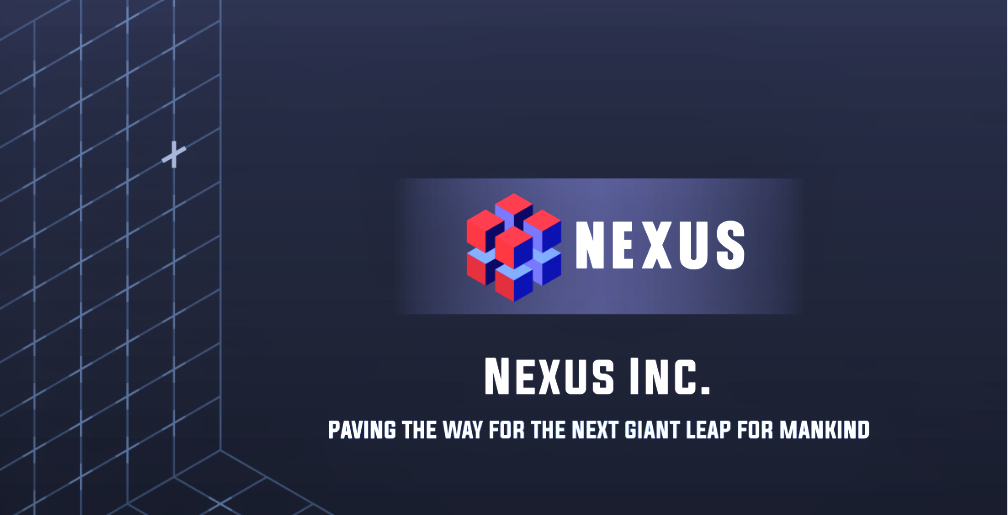
Nexus Inc. (“Nexus”), an IoT, tech, digital asset management firm, has launched the world’s first ethereum blockchain network onboard the International Space Station (ISS), with the sole objective of providing clients with ultra-secure, cryptocurrency transactions against terrestrial hackers.
Executed from Nexus’s ground-based, interface terminal, which has an uplink-downlink latency of at least 8 hours, the deceleration of the transaction speed, resulting in transmission delays in order to execute multi-signature protocols, are key to defeating theft and fraud. Employing the mechanism of 2 out of 3 multi-signature keys will ensure that if one authentication key is compromised, the funds transaction remains safe and unscathed. Additionally, Nexus’s blockchain payload caps no more than 100 transactions per transmission, further augmenting an already existing multiple layers of security.
Clients of Nexus, trading in ethereum, will have unprecedented protection when performing cryptocurrency transactions. Furthermore, Nexus’s newly-minted blockchain wallet payload will institute asset custodian as a result of its one-of-a-kind payload located in the ISS. A following set of security protocols are set in motion with every single transaction:
- Phase 1: Starting from earth 1. Nexus’s corporate clients install wallet apps. 2. First signature is generated within the wallet app in order to commence transaction. 3. Transaction files are then encrypted and uploaded onto Nexus’s server. 4. Nexus transfers encrypted transaction files to an SPC server. 5. The SPC server transfers encrypted transaction files onto Nanoracks’s ground station.
- Phase 2: Into the International Space Station 6. Nanoracks’s ground station uploads encrypted transaction files onto Nexus’s blockchain payload located in the International Space Station. 7. Transaction files are then decrypted. 8. Nexus’s blockchain node adds second signature to the transaction files. 9. Transaction files are re-encrypted.
- Phase 3: Back to earth 10. Re-encrypted transaction files are transferred back to Nanoracks’s ground station and in turn, back to an SPC server and ultimately, onto Nexus’s terminal. 11. Nexus’s server broadcasts completed re-encrypted transaction files to its blockchain network for its clients to view.
Nexus’s ethereum multi-signature blockchain node payload is developed by decentralized infrastructural provider SpaceChain Foundation (“SpaceChain”); the rocket mission is made possible by Houston-based satellite operator and space solutions company Nanoracks, and their Space Act Agreement with NASA. Nexus commissioned SpaceChain, a community-based space platform that combines space and blockchain tech to allow users to develop and run decentralized apps in space, in mid-2020 to build an on-orbit software space node. Upon completion, SpaceChain delivered the hardware to Nanoracks.

Headquartered in Singapore, SpaceChain worked on the integration of blockchain with space technology to deploy decentralized satellite infrastructure and multi-signature services for Nexus. As a result, SpaceChain, for an on behalf of Nexus, deployed the world’s inaugural commercial blockchain node tethered to uplifting security protocols when transacting ethereum trades.
The Space Act Agreement with NASA covers the cooperation for use of the International Space Station to which the Nanoracks platform is located. The agreement also affords Nanoracks opportunities to coordinate and conduct short- and long-term space station research and experiments for its clients and in the case of Nexus, security node installations; as well as low-cost satellite deployment solutions. Each project sent aboard the International Space Station requires the utmost extensive safety and security checks, and about 1,000 pages of documentation as required by NASA, and Nanoracks is wholly in charge and responsible as gatekeeper and caretaker. The blockchain wallet is installed as a hosted payload on Nanoracks’s commercial platform, which includes all data being up- and downlinked, onboard the International Space Station.
Founder and Chief Executive Officer of Nexus Inc., John Pollock, said, “Our native space nodes will empower customers with the ability to carry out ultra-secure on-orbit multisignature transaction services, without fear of hacker infiltration. The fact that there are transmission delays between satellite and earth, demonstrates the deeply controlled levels of electronic safeguarding for all movement of financial assets; guaranteeing the independence of ethereum contract operations from centralized, Earth-bound servers. This level of custodian service is unmatched as we completely obliterate opportunities for cybercrime. With this successful mission launch to space, I expect Nexus Inc. to develop additional blockchain capabilities for enterprise business applications for our clients.”
Pollock added, “While the software has already been tested in-house, the embedding of the blockchain hardware inside the International Space Station signals an inaugural trial transaction that will be undertaken within the next 30 days. The test protocols will include data transfers within ground- and space-based servers, along with communications and successful deployment of multi-signatures.”
